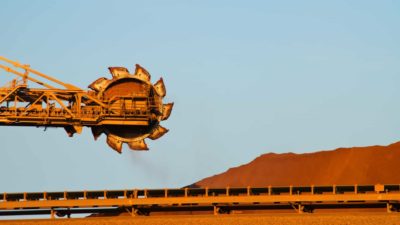Australian rare earths miner Lynas Corporation Ltd (ASX: LYC) has joined a list of resources companies that have bucked the recent downward trend in global equities markets and have actually seen their share prices increase in October.
When the markets closed on Friday afternoon the Lynas share price had risen to $1.78, up a little over 5% from where they ended the previous week. This continues a positive trend for October, where Lynas has seen its share price rise over 11% in tough market conditions.
While the share prices of companies in growth sectors like healthcare and technology have been hammered recently, those of companies that act as pure plays on certain physical commodities have fared quite well. Many Australian gold miners, like Saracen Mineral Holdings Limited (ASX: SAR) and Evolution Mining Ltd (ASX: EVN), have seen double-digit growth in their share prices this month.
Market volatility has pushed up demand for safe haven assets like gold, benefitting producers of these commodities. However, rare earths generally aren't considered safe haven assets. Instead, "rare earths" are a class of elements that possess unique physical, magnetic or chemical properties. These unique characters make rare earth elements particularly useful in the construction of high tech and in-demand items like smartphones, hybrid cars, wind turbines, and military aircraft.
It's also true that not all the major resources companies have performed as strongly as the gold miners. The share prices of mining giants BHP Billiton Limited (ASX: BHP), Rio Tinto Limited Fully Paid Ord. Shrs (ASX: RIO) and Fortescue Metals Group Limited (ASX: FMG) are all down for October.
So what makes Lynas unique?
Lynas released some strong quarterly numbers last week. Revenues for the quarter ending 30 September 2018 were $105.6 million, an increase of 15% on the prior quarter, which was spurred mainly by increasing demand from Japanese customers. The company also posted record quarterly production numbers of total rare earth oxides, up 8.7% from 30 June to 5,220 tonnes. This included record production of neodymium and praseodymium, both of which are used in hybrid cars.
US Demand for rare earths has also been increasing. According to a 2018 report by the US Geological Survey, the US imported $150 million worth of rare earths in 2017, a steep rise on the $118 million imported in 2016. Currently, most of that is supplied by China, but with trade tensions between the US and China increasing under the Trump administration, producers from other nations – like Australia – may now have a chance to take some of that market share.
The risk with Lynas is lingering uncertainty around its Malaysian operations. Lynas mines rare earths at its Mt Weld project in Western Australia but refines them at its plant in Malaysia. The Malaysian government is currently conducting a review of these operations and will decide on whether to continue to offer Lynas a tax break on its Malaysian business.
Should you invest?
Given their use in many highly specialised digital and green energy technologies it can reasonably be expected that demand for rare earths could continue to grow. And with trade tensions between the US and China continuing to mount, there may be increased export opportunities for Australian producers like Lynas. But with some uncertainty on the horizon for their Malaysian operations, there is also the possibility of significant relocation costs for Lynas in the near future.
At the very least, the strong performance of some resource stocks (including Lynas) shows the benefits of holding a diversified portfolio consisting of stocks from a wide range of sectors. This can help to shield your portfolio from market volatility.








